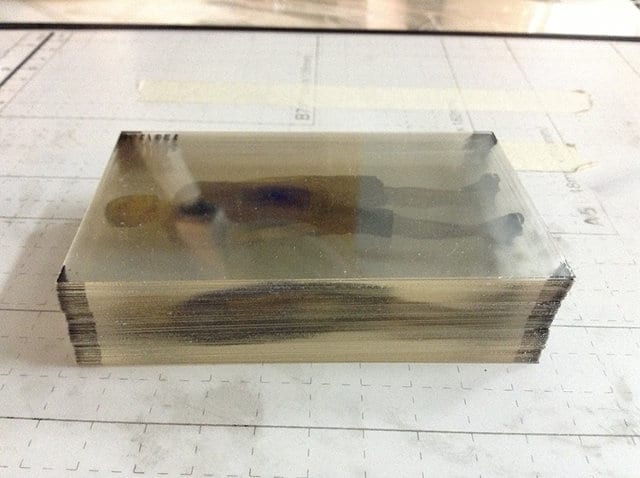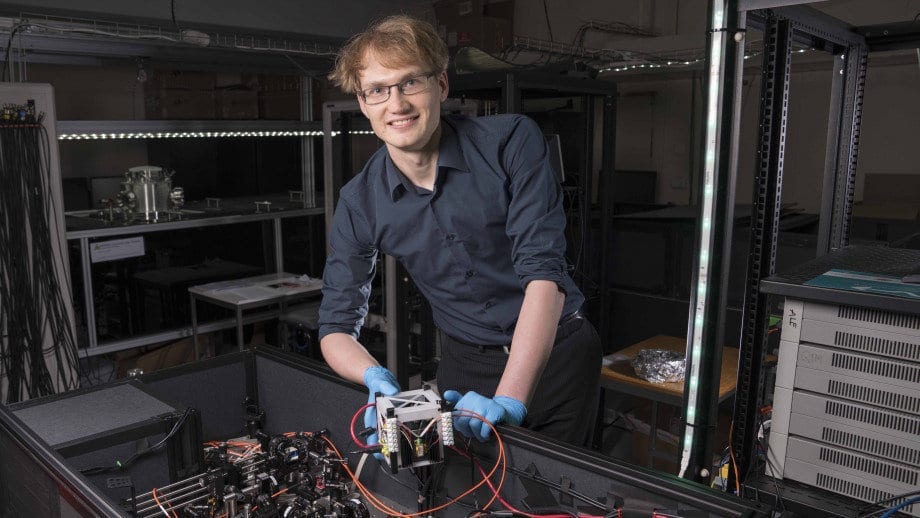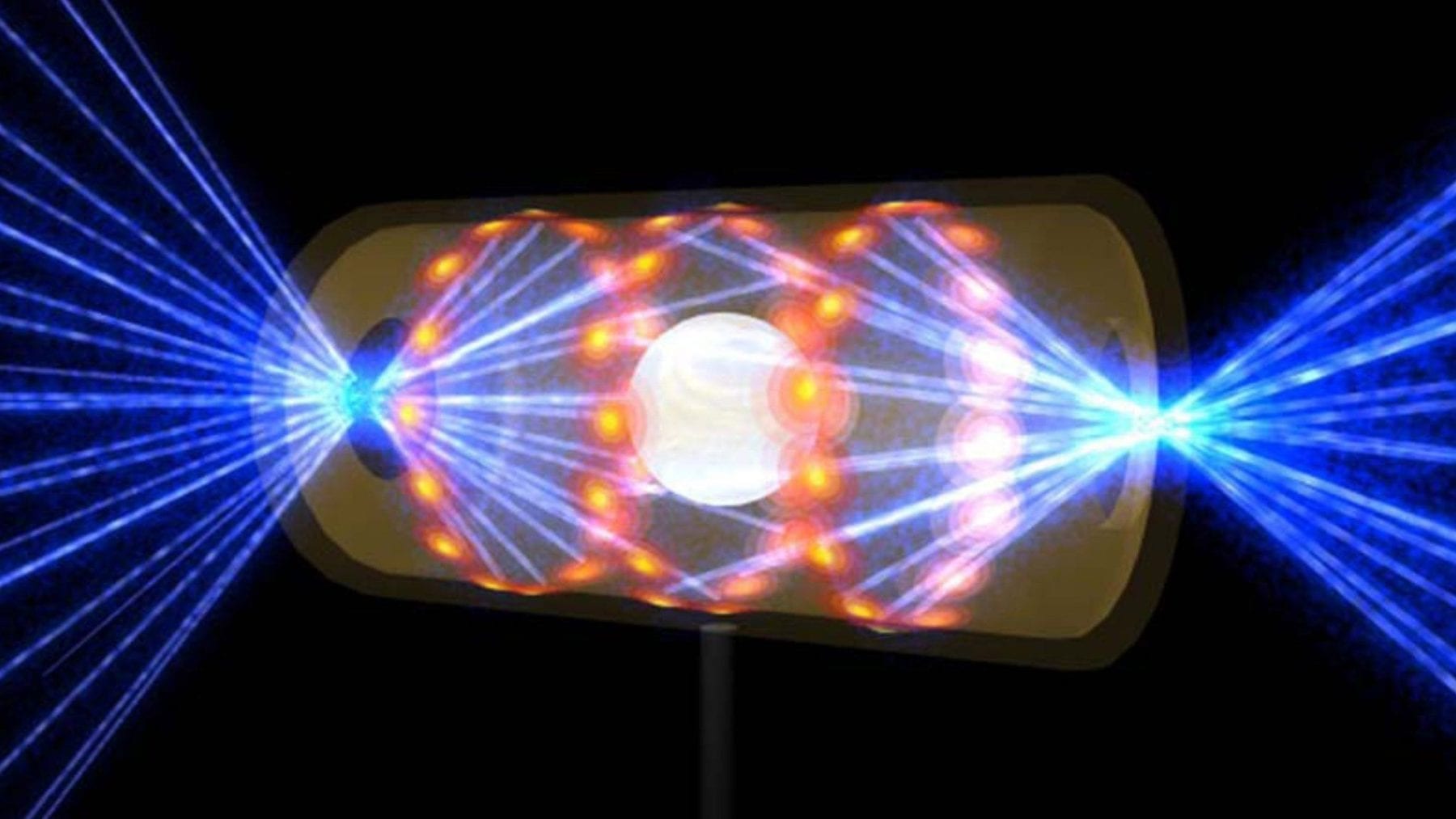
It looks like a miniature shark is sitting in that clear cube. But it’s all an illusion–an illusion that could have a big future.
If you think 3-D printing will change the world, you probably imagine yourself printing objects that work, like organs and furniture. But today’s desktop printers are primarily churning out objects to look at, like self-portraits and plastic gnomes. (Check out theInstagram gallery of MakerBot’s “thingiverse” for more.) For these and other “purely visual” uses, Hong Kong inventor Shawn Frayne has created an alternative that is faster, simpler, and ingenious to the point of appearing magical.
“Purely visually, I think Looking Glass sort of crushes–it will crush–3-D object printing,” says Frayne.
To explain Looking Glass, Frayne met me in a Brooklyn coffee shop with a box full of Looking Glasses. “It’s hypervisual so it should explain itself,” he told me as he placed on the table an assortment of what appeared to be 3-D-printed objects suspended in clear plastic boxes: four lego men, a vase of flowers, a shark. “My pitch is this may look like a toy shark, but in fact there is nothing in here but for ink,” he said.
Ink, on 200 sheets of plastic inside a box he bought online. The process by which this comes to impersonate a shark is what Frayne calls “volumetric printing.” It started with a 3-D design file made for traditional 3-D printing (in this case, by Peter Tan). But instead of creating each layer with extruded plastic, Looking Glass printed them in full color onto 0.3 mm-thick, clear lucite sheets using an inkjet, poster printer. “It’s using 2-D printers for 3-D printing,” says Frayne./
The stack alone creates a 3-D effect, but hampered by something called Fresnel reflection. Essentially, the clear sheets becomes murkier and murkier as the light refracts through less-dense air between the sheets. A vase of flowers produced this way looks like it’s trapped in a thick cloud. “It’s the Han Solo carbonite thing,” says Frayne.
The insight that allowed Frayne and his colleagues at Haddock Inventions to solve this problem came from their years of work in a totally different sector: cleantech. Specifically, it came from solar panels, which often use an “index matching” substance to capture light more efficiently. “Basically it just means you put some sort of substance between two materials so light passes through more easily and have less reflections,” he explains. You replace the air with something that approximates the substance the air sits between. In this case, to mimic the refraction index of the acrylic lucite sheets they found a solution in silicon oil. “It’s a perfect match optically for acrylic,” says Frayne. ”You can think of it as if we melted the whole stack together.”
The result is a representation of a shark that I would swear was a physical shark–until I turned it 90 degrees. Seen from the side, you can see the sides of the sheets, with the ink visible only at angles. “It just disappears,” says Frayne.
That seeming weakness could be reduced with thinner sheets, but it may also be offset by other advantages. While 3-D printing a complicated object can take overnight, the whole process of printing, stacking, vacuuming out the air and pumping in the silicon oil takes Looking Glass less than an hour. “Eventually we can get it down to 30 minutes,” Frayne says.
The Latest Bing News on:
Looking Glass
- Through the Looking Glass of Taxationon April 28, 2024 at 4:45 am
In the long calculus, however, it was the taxation that drove up the cost of living and killed the American Dream, creating a situation where people can never really fully live because they cannot ...
- Alice Through the Looking Glass (1998) Streaming: Watch & Stream Online via Amazon Prime Videoon April 27, 2024 at 3:02 pm
Alice Through the Looking Glass (1998) is a fantasy adventure TV movie directed by John Henderson. It is an adaptation of Lewis Carroll’s popular 1871 book Through the Looking-Glass. In this unique ...
- Alice Through the Looking Glass (2016) Streaming: Watch & Stream Online via Disney Pluson April 27, 2024 at 2:45 pm
Alice Through the Looking Glass (2016) is a fantasy adventure film directed by James Bobin. It is the second installment in the Alice in Wonderland movie franchise. Based on the characters written by ...
- The Supreme Court Goes Through the Looking Glass on Presidential Immunityon April 26, 2024 at 1:24 pm
The justices appeared reluctant to accept the argument quite as broadly as Sauer made it. For example, Trump’s lawyers have argued that a former president could face charges only after first being ...
- 'Through the looking glass': Jamie Dimon sounds off on regulatory burdenon April 23, 2024 at 11:35 pm
The JPMorgan Chase CEO took aim Tuesday at the proposed Basel III endgame rules, hindrances to mergers and bureaucratic burdens. "I would love to have a more productive relationship with regulators, ...
- Through the Looking Glass: The Myriad Opportunities of Digital Signage and Videowallson April 15, 2024 at 11:46 am
CI's Digital Signage and Videowall Deep Dive spotlights the prospects for integrators in different markets, as well as in content-as-a-service offerings.
- Through the Looking Glasson April 7, 2024 at 11:38 am
Through the Looking Glass is a game for the Apple Lisa and Macintosh, developed and published by Apple. Advertisement Through the Looking Glass is a game for the Apple Lisa and Macintosh ...
- Looking Glass could get more overnight accommodationson March 31, 2024 at 10:00 pm
Looking Glass Rock could get more dedicated space for campers and glampers as a primitive campground operator sought a conditional use permit from the San Juan County Planning Commission on March 14.
- Alice Through the Looking Glass Printable Activity Pageson March 26, 2024 at 9:25 am
Get creative with Alice Through the Looking Glass printable activity pages! Enjoy puzzles, coloring sheets, and more inspired by the world of Wonderland. Step through the looking glass and embark on ...
- Looking Glass Go is a portable holographic display you can view 3D spatial photos onon December 5, 2023 at 4:00 pm
Looking Glass has been making holographic displays for a while, but will introduce a new, portable and affordable model next summer. Called Looking Glass Go, the "world's first" pocketable ...
The Latest Google Headlines on:
Looking Glass
[google_news title=”” keyword=”Looking Glass” num_posts=”10″ blurb_length=”0″ show_thumb=”left”]
The Latest Bing News on:
Using 2-D printers for 3-D printing
- World's biggest 3D printer whirs into actionon April 26, 2024 at 10:04 am
It can print up to 500lbs (227kg) of material per hour. While 3D printers often print using plastic, the university hopes to include more sustainable materials and prioritise recycled polymers.
- Is Your Old 3D Printer Obsolete? Increasing Frustration with Outdated Modelson April 26, 2024 at 8:50 am
The speed advantage is more dramatic than you might expect. In our lab we recently replaced three Prusa MK3S 3D printers with three Bambu Lab units. The Bambu Lab machines are about 5X faster than the ...
- Stellar Blade Fan Using 3D Printer to Create Eve Statueon April 23, 2024 at 5:00 pm
A Stellar Blade fan showcases their enthusiasm for the highly anticipated game by creating and sharing a model of Eve for 3D printing. A fan's dedication to Stellar Blade is showcased through a 3D ...
- University of Maine using giant 3D printer to build homeson April 23, 2024 at 2:25 pm
University of Maine, which boasts the world’s largest 3D printer, developed one even bigger that may one day create entire neighborhoods.
- I Tried 3D Printing a Photo, Here's How It Wenton April 23, 2024 at 4:00 am
True lithophanes are porcelain pieces that have designs pressed into them when the porcelain is soft. Then, when held up to a light, the image becomes visible. The different thicknesses of the ...
- University of Maine is using giant 3D printer to build homeson April 22, 2024 at 4:59 pm
Apr 23, 2024 Apr 23, 2024 Updated 2 mins ago 0 University of Maine, which boasts the world’s largest 3D printer, developed one even bigger that may one day create entire neighborhoods. The ...
- A 3D Printer Used By Microsoft, Ford, and NASA Is Now Commercially Available — Here's What It Can Doon April 17, 2024 at 7:45 am
A 3D printer already in use at Microsoft, Ford, and NASA is now commercially available — and it runs on some 3D printed parts itself. Formlabs, a 3D printing company with a unicorn valuation of $2 ...
- Formlabs says new 3D printer ‘rivals injection molding’on April 17, 2024 at 6:01 am
This month marks five years since the release of the Form 3, Formlabs’ last major 3D ... to print more small parts simultaneously. Looks like Formlabs really dogfooded this one, using the ...
- Formlabs' new 3D printers are faster and cheaper to useon April 17, 2024 at 6:01 am
(For the uninitiated: The B suffix stands for “biocompatible,” meaning the unit can 3D-print materials for medical applications. Formlabs has made inroads into the dental and medical ...
- Eight Home Improvement Projects You Can Use a 3D Printer Foron April 14, 2024 at 5:00 pm
You can use your 3D printer to create custom outlet covers and light-switch plates. Printing your own allows you to match the style to the rest of your home or create something unique that’s ...
The Latest Google Headlines on:
Using 2-D printers for 3-D printing
[google_news title=”” keyword=”using 2-D printers for 3-D printing” num_posts=”10″ blurb_length=”0″ show_thumb=”left”]










